TRP has been quietly building something of a reputation for itself in road and cross circles with the HyRd hydraulic caliper and cable-based Spyre and Spyre SLC disc brakes. The Spyke marks its latest foray into the mountain bike disc brake market.
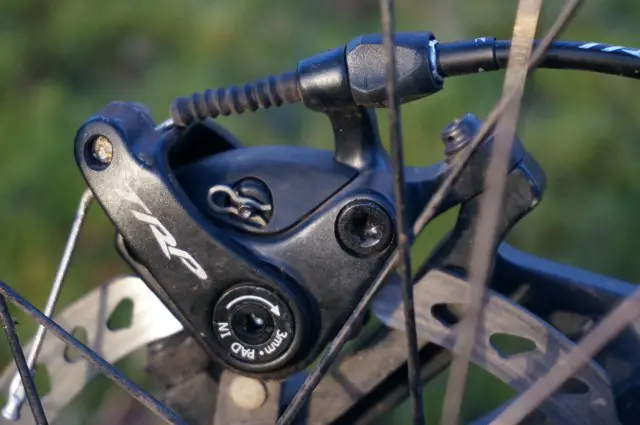
In contrast with all other mechanical discs currently on the market, the Spyke features a dual-sided mechanical design which holds the promise of even pad wear. Adjustment can be dealt with either through the in-built barrel adjuster mounted on the caliper body or by the individual pad adjusters on either side of the caliper body. This means that the distance of each pad from the disc can also be individually adjusted.
In order to protect the pads from contamination by grit and snow, the caliper has a funky little plastic cover which can easily be removed with an hex key for changing worn pads. Calipers are sold individually but come supplied with a mounting kit and a choice of either 160mm or 180mm disc rotors.
Setting them up.
Anyone who has set up single-sided mechanical disc brakes will attest that they can be a little, ahem, frustrating at times. With only one moving piston, even a short ride in the mud can see you having to fiddle with things to get them feeling like they did pre-ride. In the case of the Spykes however, set up simply involved bolting the caliper loosely onto the mount, adjusting the bite point then cinching everything down. Et voila! Done Already, the Spykes were proving to be ahead of their nearest rivals.
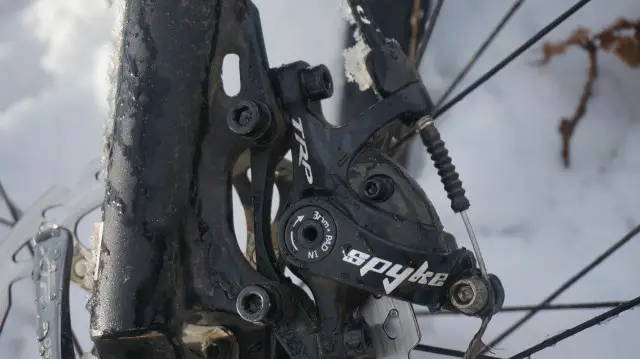
One thing to note is that, unlike in the picture above, make sure that you fit the cable on the inside of the bolt touching the swingarm, as this makes a noticeable difference to the power and feel of the brake. Mounting on the outside will still work but not as well as it is capable of!
For the purposes of the test, I fitted the brakes to my fat bike which had previously been fitted with XTR Trail hydraulic brakes. I left my Shimano Ice Tech rotors on to ensure a fair comparison of performance. For levers, I fished out an old pair of XTR Direct Pull numbers, which first saw service in the last century. Cabling was taken care of by TRP’s own compressionless hosing kit, DiscConnect, available separately.
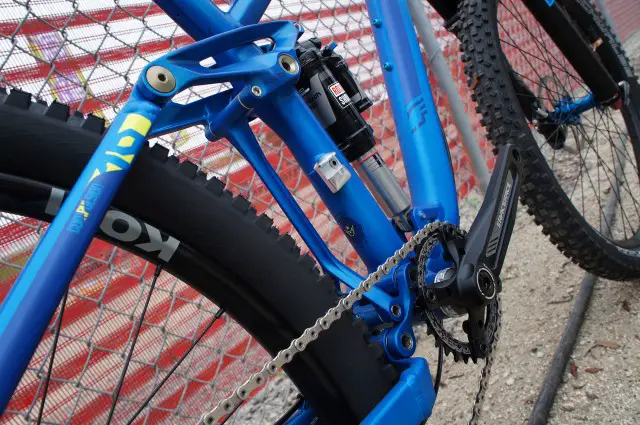
Out on the trail.
I started as I meant to go on and used them on some pretty meaty rides from the off. Despite being mounted on a fat bike with the not inconsiderable additional weight that the heavier wheels and tyres bring, I was pleased to note that when set up close to the disc, I was able to endo with ease, while pulling a skid on the back felt just as easy as with the XTR Trail brakes, perhaps slightly more so.
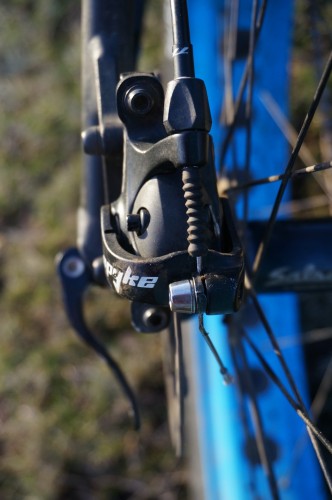
The feel at the lever, while lacking the on/off feel of a well set-up pair of hydraulics, offers confidence-inspiring modulation. On every ride, whether on the beach, on snow and ice or on regular cross-country trails, I was safe in the knowledge that if I was required to drop anchor, the power was on tap; while for gently scrubbing off speed on flowing woodland singletrack, a gentle pull on the lever was all that was required.
The wear of the supplied mixed-compound pads has been more than acceptable given that a combination of sand, salt water, grit and snow have all done their best to wear them out. Being the same design as Shimano 515/525 pads, replacements are readily available for not much money. It’s refreshing to find compatibility in the brakes market as opposed to another new standard.
It may only be a small detail but the inclusion of the detachable pad cover has left me asking ‘why on earth has nobody done this before’? On both snowy and muddy rides, one thing I have noticed is the marked reduction in the incidence of that annoying ‘grrrffft, pffft’ graunchy sound of trail-generated grinding paste wearing away both pad and disc. Braking performance is definitely improved in adverse conditions as a result. Who would have thought that such a simple addition to a brake would make such a real world improvement? I suspect the reason that my pads have lasted so long may also be down to its inclusion.
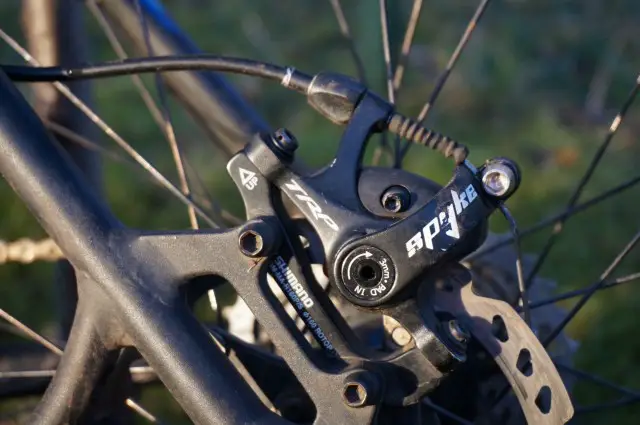
In the Spyke, TRP has arguably created a brake that can directly take on hydraulic brakes and hold its own. In terms of simplicity, ease of fitting and adjustment, it is to my mind the best disc brake on the market. Power and modulation are almost on a par with the XTR Trail brakes I replaced them with, while the detachable pad cover is an idea that I would hope other manufacturers would copy.
But at £79.99 per end, they definitely aren’t cheap – especially given that you will also have to buy a pair of linear pull levers and cabling. I suspect that this will be their toughest challenge: for similar money you could buy Deore or SLX hydraulic brakes but that is perhaps missing the point.
Verdict:
As someone who has experienced the vagaries of hydraulic brakes failing over the years – whether through overheating and melting piston seals, sucking in air despite multiple re-bleeds or failing in extreme cold – a set of mechanical brakes that work as well as the Spykes is a gold-plated good thing. For the moment at least, the XTR Trails will be remaining in the parts box.
Review Info
| Brand: | TRP |
| Product: | Spyke mechanical disc brake |
| From: | Upgrade Bikes, upgradebikes.co.uk |
| Price: | £79.99 per end |
| Tested: | by CJ for two months |
Comments (0)
Leave Reply
Post Comment

Genuinely better than Avid BB7s though…?
I’ll have your XTRs if you don’t want them anymore!